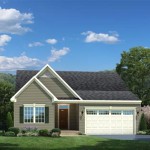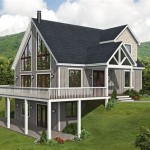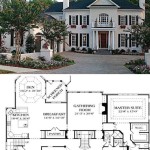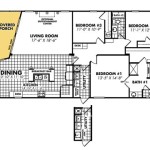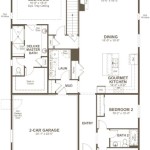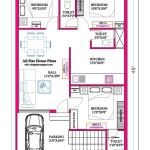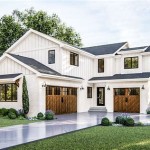Energy Efficient Homes: Integrating Floor Plans for Sustainability
The pursuit of energy-efficient homes has become a paramount concern for builders, architects, and homeowners alike. A well-designed floor plan plays a vital role in minimizing energy consumption and maximizing comfort. Thoughtful consideration of spatial arrangement, orientation, and material selection contributes significantly to reducing reliance on artificial heating and cooling systems.
Energy efficiency in residential design considers several factors, including minimizing heat loss during colder months and reducing heat gain during warmer months. Optimizing natural light, strategically placing windows, and utilizing efficient insulation are crucial elements in creating an energy-efficient living space. The floor plan acts as the foundation for these design decisions, dictating how these elements can be integrated effectively.
Strategic Orientation and Layout
The orientation of a home on its building site is a fundamental aspect of energy-efficient design. In the Northern Hemisphere, orienting the long axis of the house along an east-west line maximizes solar gain during the winter months when the sun is lower in the sky. This allows sunlight to penetrate deep into the living spaces, warming them naturally and reducing the need for artificial heating.
Conversely, minimizing exposure to the intense summer sun is equally important. Overhangs, awnings, and strategically placed trees can shade south-facing windows, preventing excessive heat gain. Similarly, minimizing west-facing windows reduces the impact of the hot afternoon sun. The floor plan should reflect these considerations, with living areas and bedrooms ideally positioned to benefit from optimal solar exposure.
Internal layouts within a home also influence energy efficiency. Open floor plans can promote natural airflow, reducing the need for air conditioning. However, carefully consider zoning to prevent heat loss or gain in unoccupied areas. For example, separating sleeping areas from living areas with insulated walls and doors can help maintain different temperature zones, optimizing energy use. The use of thermal mass materials, such as concrete or brick, in strategically placed interior walls can further regulate temperature fluctuations by absorbing and releasing heat slowly.
The placement of rooms with similar temperature requirements adjacent to each other is another strategy to reduce energy waste. Grouping bathrooms, laundry rooms, and kitchens, which often require additional heating or cooling due to moisture or appliance use, can streamline HVAC systems and prevent the unnecessary conditioning of adjacent spaces.
Optimizing Natural Light and Ventilation
Natural light is a valuable resource that can significantly reduce the need for artificial lighting. Floor plans should be designed to maximize daylight penetration, especially in frequently used living areas. Large windows, skylights, and light wells can bring natural light into the interior, creating a brighter and more inviting atmosphere.
Consider the placement of windows to ensure even distribution of natural light throughout the day. South-facing windows provide the most sunlight during the winter, while east-facing windows capture the morning sun. North-facing windows provide consistent, diffused light, ideal for studios or workspaces. The floor plan should carefully consider the function of each room and its corresponding daylighting needs.
Natural ventilation is another key aspect of energy-efficient design. Strategically placed windows and doors can create cross-ventilation, allowing fresh air to circulate through the house. This reduces the reliance on air conditioning and improves indoor air quality. Operable windows on opposite walls or corners of a room are particularly effective in promoting airflow. Consider the prevailing wind direction when designing the floor plan to maximize the benefits of natural ventilation.
In addition to windows and doors, other architectural features can enhance natural ventilation. Clerestory windows, located high on walls, allow light and air to enter while maintaining privacy. Wind towers, common in some regions, capture and channel wind into the home, providing natural cooling. The floor plan should integrate these features seamlessly to optimize natural ventilation and reduce energy consumption.
Material Selection and Building Envelope
The materials used in constructing a home have a significant impact on its energy efficiency. Selecting materials with high insulation values is crucial for minimizing heat loss in winter and heat gain in summer. Insulated walls, roofs, and floors create a thermal barrier that helps maintain a consistent indoor temperature.
Consider the R-value of insulation materials when designing the building envelope. Higher R-values indicate greater insulation performance. Different regions have different insulation requirements based on climate. Select insulation materials that meet or exceed local building codes and consider exceeding these standards for even greater energy savings. The floor plan should clearly indicate the type and thickness of insulation required in different areas of the building.
In addition to insulation, air sealing is essential for preventing air leaks, which can significantly reduce energy efficiency. Air leaks allow conditioned air to escape and unconditioned air to enter, increasing heating and cooling costs. Carefully seal gaps and cracks around windows, doors, pipes, and electrical outlets. The floor plan should include details on air sealing techniques and materials to ensure a tight building envelope.
The choice of window and door materials also affects energy efficiency. Windows with low-e coatings and gas fills reduce heat transfer. Double- or triple-pane windows provide better insulation than single-pane windows. Energy-efficient doors with weather stripping and insulated cores minimize air leakage. The floor plan should specify the type and performance ratings of windows and doors to ensure optimal energy efficiency.
The consideration of sustainable and locally sourced materials can also contribute to the overall energy efficiency and environmental impact of a home. Choosing materials with low embodied energy, meaning the energy required to extract, manufacture, and transport them, reduces the carbon footprint of the building. Utilizing recycled or reclaimed materials further minimizes environmental impact. The floor plan documentation can include a materials palette that prioritizes sustainable and energy-efficient options.
The roof design also plays a crucial role in energy efficiency. A light-colored roof reflects more sunlight, reducing heat gain in summer. Green roofs, covered with vegetation, provide insulation and evaporative cooling. The floor plan should specify the roof type and materials to optimize energy performance. Overhanging eaves and properly designed gutters are also important for protecting the building from the elements and preventing water damage, which can compromise insulation performance.
Landscaping can also complement the energy efficiency of a home. Deciduous trees planted on the south and west sides of the house provide shade in summer and allow sunlight to penetrate in winter. Windbreaks, such as rows of evergreen trees, can reduce wind chill in winter. The floor plan should consider the placement of landscaping to optimize its energy efficiency benefits.
Integrating energy-efficient appliances and systems into the floor plan is essential for maximizing energy savings. Consider the placement of major appliances, such as refrigerators, ovens, and washing machines, to optimize their performance and minimize energy consumption. Energy-efficient lighting fixtures, such as LED bulbs, can significantly reduce electricity use. Smart home technology, such as programmable thermostats and automated lighting controls, can further enhance energy efficiency.
In conclusion, the design of an energy-efficient home is a holistic process that involves careful consideration of the floor plan, orientation, material selection, and integration of energy-efficient technologies. By prioritizing these factors, builders, architects, and homeowners can create sustainable and comfortable living spaces that minimize energy consumption and reduce environmental impact. A thoughtfully designed floor plan is the cornerstone of an energy-efficient home, providing a framework for integrating all the necessary elements to achieve optimal performance.

Cool Energy Efficient Concrete House Plans Houseplans Blog Com

Sustainable Building In 2024 Energy Efficient Kit Homes

Cool Energy Efficient Concrete House Plans Houseplans Blog Com

Energy Efficient Home Design Plans Cad Pro

Home Designs Fsec

Energy Efficient House Plan 55060br Architectural Designs Plans

How To Build An Energy Efficient Home

Floor Plan Friday An Energy Efficient Home House Plans L Shaped

Energy Efficient Tudor Home Plan 55087br Architectural Designs House Plans

Cool Energy Efficient Concrete House Plans Houseplans Blog Com


